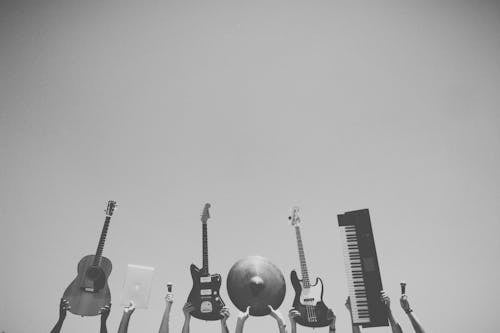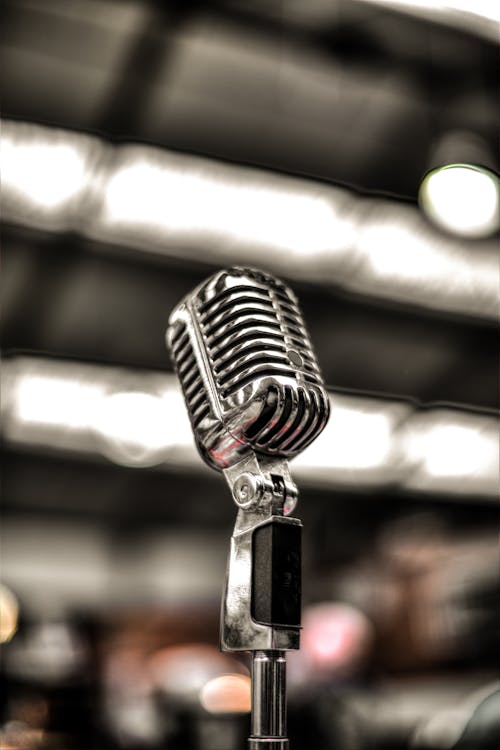
Albeit beginner performers contrast from expert artists in that novice artists have a non-melodic wellspring of salary, there are regularly numerous connections among novice and expert artists. Starting novice performers take exercises with expert artists. In people group settings, propelled beginner artists perform with expert artists in an assortment of gatherings and symphonies. In some uncommon cases, novice artists achie ve an expert dimension of capability, and they can perform in expert execution settings.
ve an expert dimension of capability, and they can perform in expert execution settings.
 ve an expert dimension of capability, and they can perform in expert execution settings.
ve an expert dimension of capability, and they can perform in expert execution settings.
As referenced above, not exclusively do the perspectives included as music change, their significance fluctuates. For example, song and congruity are frequently viewed as given more significance in established music to the detriment of beat and timbre. It is regularly discussed whether there are parts of music that are general. The discussion frequently relies on definitions. For example, the genuin ely basic declaration that "tonality" is general to all music requires a broad meaning of tonality.
ely basic declaration that "tonality" is general to all music requires a broad meaning of tonality.
 ely basic declaration that "tonality" is general to all music requires a broad meaning of tonality.
ely basic declaration that "tonality" is general to all music requires a broad meaning of tonality.  Music is a type of workmanship that includes composed and discernable sounds and quietness. It is ordinarily communicated as far as pitch (which incorporates tune and agreement), musicality (which incorporates beat and meter), and the nature of sound (which incorporates timbre, explanation, elements, and surface). Music may likewise include complex generative structures in time through the development of examples and mixes of common improvements, mainly solid. Music might be utilized for creative or tasteful, informative, excitement, or formal purposes. The meaning of what comprises music shifts as indicated by culture and social setting.
Music is a type of workmanship that includes composed and discernable sounds and quietness. It is ordinarily communicated as far as pitch (which incorporates tune and agreement), musicality (which incorporates beat and meter), and the nature of sound (which incorporates timbre, explanation, elements, and surface). Music may likewise include complex generative structures in time through the development of examples and mixes of common improvements, mainly solid. Music might be utilized for creative or tasteful, informative, excitement, or formal purposes. The meaning of what comprises music shifts as indicated by culture and social setting. In the event that depiction can be seen as a visual work of art, music can be seen as a sound-related artistic expression.
Moral story of Music, by Filippino Lippi
Moral story of Music, by Lorenzo Lippi
Substance
1 Definition
2 History
3 Aspects
4 Production 4.1 Performance
4.2 Solo and group
4.3 Oral convention and documentation
4.4 Improvisation, translation, piece

4.5 Composition
/
[edit] Definition as observed by [http://www.FaceYourArt.com]
Principle article: Definition of music
See additionally: Music kind
The broadest meaning of music is sorted out sound. There are perceptible examples to what is extensively named music, and keeping in mind that there are reasonable social varieties, the properties of music are the properties of sound as apparent and prepared by people and creatures (winged creatures and creepy crawlies additionally make music).
Music is defined or composed sound. Despite the fact that it can't contain feelings, it is now and then intended to control and change the feeling of the audience/audience members. Music made for motion pictures is a genuine case of its utilization to control feelings.
 Greek rationalists and medieval scholars characterized music as tones requested on a level plane as tunes, and vertically as harmonies. Music hypothesis, inside this domain, is examined with the pre-supposition that music is deliberate and frequently lovely to hear. In any case, in the twentieth century, authors tested the idea that music must be lovely by making music that investigated harsher, darker timbres. The presence of some cutting edge kinds, for example, grindcore and commotion music, which appreciate a broad underground after, show that even the crudest clamors can be viewed as music if the audience is so disposed.
Greek rationalists and medieval scholars characterized music as tones requested on a level plane as tunes, and vertically as harmonies. Music hypothesis, inside this domain, is examined with the pre-supposition that music is deliberate and frequently lovely to hear. In any case, in the twentieth century, authors tested the idea that music must be lovely by making music that investigated harsher, darker timbres. The presence of some cutting edge kinds, for example, grindcore and commotion music, which appreciate a broad underground after, show that even the crudest clamors can be viewed as music if the audience is so disposed. twentieth century writer John Cage couldn't help contradicting the thought that music must comprise of lovely, detectable tunes, and he tested the idea that it can impart anything. Rather, he contended that any sounds we can hear can be music, saying, for instance, "There is no clamor, just sound,"[3]. As indicated by musicologist Jean-Jacques Nattiez (1990 p.47-8,55): "The outskirt among music and clamor is in every case socially characterized - which infers that, even inside a solitary society, this fringe does not generally go through a similar spot; to put it plainly, there is once in a while a consensus.... Apparently there is no single and intercultural widespread idea characterizing what music may be."
Johann Wolfgang Goethe trusted that examples and structures were the premise of music; he expressed that "engineering is solidified music."
[edit] History as observed by [http://www.FaceYourArt.com]
Fundamental article: History of music
See likewise: Music and governmental issues
 Dolls playing stringed instruments, exhumed at Susa, third thousand years BC. Iran National Museum.
Dolls playing stringed instruments, exhumed at Susa, third thousand years BC. Iran National Museum. The historical backdrop of music originates before the composed word and is attached to the improvement of every novel human culture. Despite the fact that the soonest records of melodic articulation are to be found in the Sama Veda of India and in multi year old cuneiform from Ur, the vast majority of our composed records and studies manage the historical backdrop of music in Western human progress. This incorporates melodic periods, for example, medieval, renaissance, rococo, traditional, sentimental, and twentieth century time music. The historical backdrop of music in different societies has likewise been recorded somewhat, and the learning of "world music" (or the field of "ethnomusicology") has turned out to be increasingly more looked for after in scholastic circles. This incorporates the reported established customs of Asian nations outside the impact of western Europe, just as the people or indigenous music of different societies. (The term world music has been connected to a wide scope of music made outside of Europe and European impact, in spite of the fact that its underlying application, with regards to the World Music Program at Wesleyan University, was as a term including all conceivable music classifications, including European customs. In scholastic circles, the first term for the investigation of world music, "similar musicology", was supplanted amidst the twentieth century by "ethnomusicology", which is as yet thought about an unsuitable coinage by a few.)

Famous styles of music shifted generally from culture to culture, and from period to period. Various societies stressed various instruments, or strategies, or utilizations for music. Music has been utilized not just for excitement, for services, and for pragmatic and masterful correspondence, yet in addition widely for promulgation.
As world societies have come into more prominent contact, their indigenous melodic styles have regularly converged into new styles. For instance, the United States twang style contains components from Anglo-Irish, Scottish, Irish, German and some African-American instrumental and vocal conventions, which had the option to meld in the US' multi-ethnic "blend" society.
There is a large group of music characterizations, a significant number of which are gotten up to speed in the contention over the meaning of music. Among the biggest of these is the division between traditional music (or "workmanship" music), and prominent music (or business music - including rock and move, blue grass music, and popular music). A few sorts don't fit conveniently into one of these "enormous two" characterizations, (for example, society music, world music, or jazz music).
Types of music are resolved as much by custom and introduction as by the real music. While most established music is acoustic and intended to be performed by people or gatherings, numerous works depicted as "traditional" incorporate examples or tape, or are mechanical. A few works, similar to Gershwin's Rhapsody in Blue, are guaranteed by both jazz and traditional music. Numerous present music celebrations commend a specific melodic kind.

There is frequently difference over what comprises "genuine" music: late-period Beethoven string groups of four, Stravinsky artful dance scores, serialism, bebop-time Jazz, rap, punk shake, and electronica have all been considered non-music by certain commentators when they were first presented.
[edit] Aspects as observed by [http://www.FaceYourArt.com]
Primary article: Aspects of music
The conventional or established European parts of music regularly recorded are those components given power in European-affected traditional music: song, congruity, mood, tone shading or timbre, and structure. An increasingly far reaching list is given by expressing the parts of sound: pitch, timbre, clamor, and duration.[1] These perspectives consolidate to make auxiliary angles including structure, surface and style. Other usually included angles incorporate the spatial area or the development in space of sounds, signal, and move. Quietness has for quite some time been viewed as a part of music, extending from the sensational stops in Romantic-time ensembles to the vanguard utilization of quietness as an imaginative explanation in twentieth century works, for example, John Cage's 4'33."John Cage considers length the essential part of music since it is the main viewpoint regular to both "sound" and "quietness."
A heartbeat is now and then taken as a general, yet there exist solo vocal and instrumental kinds with free, improvisational rhythms with no standard pulse;[2] one model is the alap area of a Hindustani music execution. As per Dane Harwood, "We should ask whether a diverse melodic general is to be found in the music itself (either its structure or work) or the manner by which music is made. By 'music-production,' I expect real execution as well as how music is heard, seen, even learned." [3]
[edit] Production
Principle article: Music industry
Music is created and performed for some, reasons, going from stylish joy, religious or formal purposes, or as an amusement item for the commercial center. Novice artists make and perform music for their very own pleasure, and they don't endeavor to get their salary from music. Proficient artists are utilized by a scope of foundations and associations, including military, chapels and synagogues, ensemble symphonies, broadcasting or film creation organizations, and music schools. Too, proficient performers function as consultants, looking for contracts and commitment in an assortment of settings.
A qualification is regularly made between music performed to serve a live crowd and music that is performed to be recorded and disseminated through the music retail framework or the telecom framework. Be that as it may, there are additionally numerous cases w


